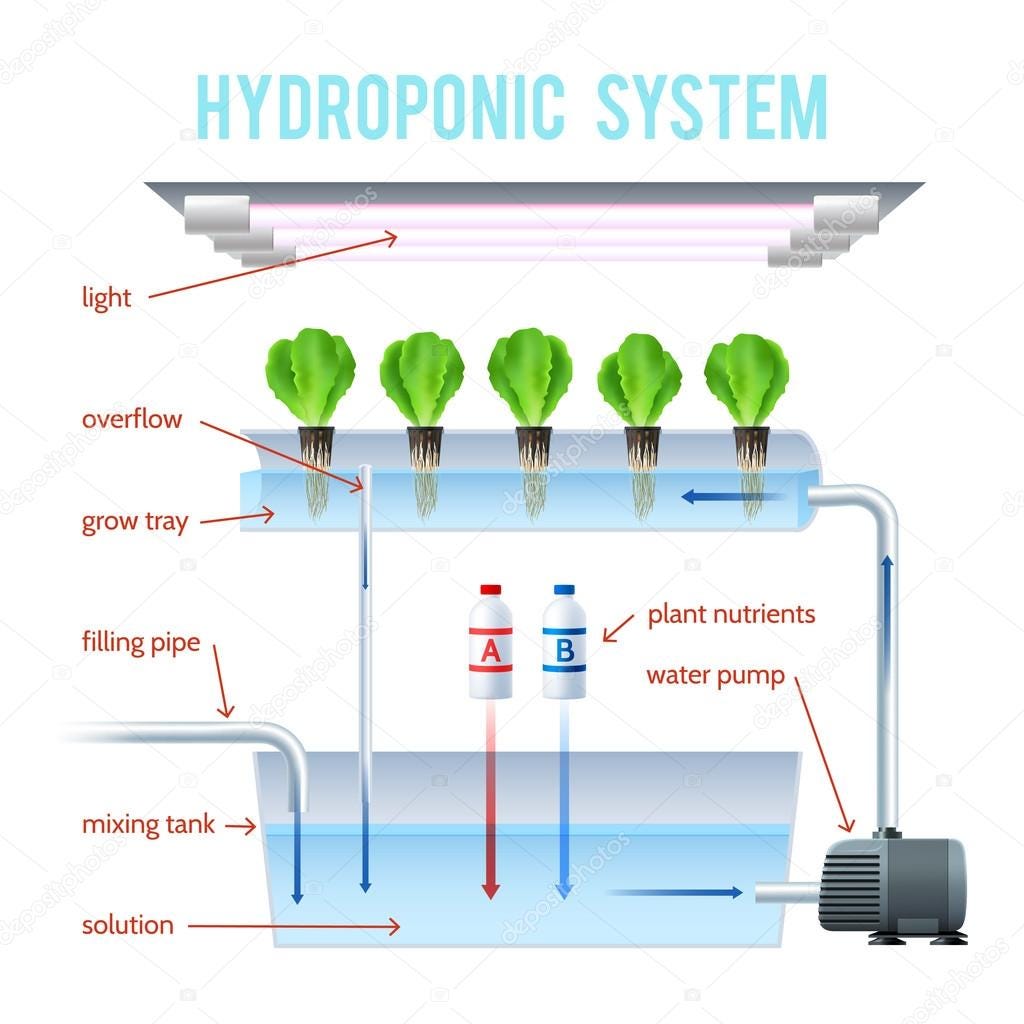Automation System for reliable and efficient Hydroponic Farms!

What is Hydroponics?
Hydroponics is a method of growing plants without soil. Instead, plant roots have direct access to water sources that contain all the nutrients they need to grow and thrive. It is a clean, controlled and compact setting for growing. These systems are often indoors, with controlled microclimates allowing for precise environmental conditions to ensure maximum plant growth with minimal exposure to risks like pests, frost, flooding, and the like. This will enable growers to harvest a significant quantity of high-quality produce with almost no chance of loss due to climate or contamination.

These vertical indoor farms can be grown in areas where there is no space for traditional agriculture. They can also grow year-round, regardless of climate or weather conditions. For many, it is a great hope that hydroponic farms will eliminate food deserts, providing fresh and healthy greens and other produce to underserved communities.
Hydroponics, when done correctly, is also an incredibly sustainable practice. Surprisingly, it uses far less water than traditional agriculture by recycling water through the system again and again. It also doesn’t contribute to soil degradation, a significant concern in the world today.
Hence, plenty of hobbyists and commercial growers have entered the world of hydroponics.
✔ Advantages of Hydroponics
- Less Resources are required — Land (about 240x yield of conventional farming), Water (Upto 98% less than traditional farming) & Energy ( In case Greenhouse)
- High Quality Produce as environment is completely regulated.
- Sustainable Farming as water is treated and recycled.
- Seasonally Agnostic.
𐄂 Shortfalls
- Commercial setup: High initial setup cost
- Commercial setup: High consumption of energy when growing indoors with temperature control and indoor lights
As a hobbyist grower with proper automation in place theres virtually no downside to having a hydroponic setup at your home as it is self sustainable. It requires little space and is easy to setup.
🔥 Automation Unit (Hardware)

This unit is based on Raspberry Pi Zero W and is built to automate mundane tasks and to take out the guess work for growers. It has required sensors to make the setup self-sustainable and reduce the day-to-day tasks. It is made to produce favourable and repeatable condition required for healthy growth of plants. It runs completely on Node(JS).
📹 — Camera
Live feed from the farm can be accessed to know the status of the produce and if there are any infestation or diseases affecting the plants.
- Live Feed
- Time Lapse of growth cycle
NPM Package: pi-camera-connect
🌱 — Sensors
It is critical to maintain the correct nutrition level of water for the plants be healthy at every stage of the growth. The nutrition in the water is sensed using pH and electrical conductivity sensors.
Plants thrive when proper temperature and humidity levels are maintained.
- Ambient Temperature and Humidity
- pH level of nutrition
- ppm level of nutrition
NPM Package: node-dht-sensor and ads1115
🎛 — Controls
LED lights and pumps are switched electronically according the set schedules. This ensures required reliable and repeatable environment.
- LED Light schedule (Typically one shift of 12 hours)
- Pump Schedule
- Nutrition Doser
NPM Package: onoff and cron
🚦 — Communication
- REST Apis
NPM Package: node-fetch
Technical Specifications
- Camera: 5MP
- 4 Channel Open Contact Relay (Rating: 230V / 10A per channel)
- pH sensor (Range:0–14PH, Resolution: ±0.15PH (STP))
- EC Sensor (Range: 0–2000us/cm Resolution: ±5% (STP))
- Temperature Sensor (Range: -40 to 80 °C, Resolution: 0.1 °C)
- Humidity Sensor (Range: 0–99.9 %RH, Resolution: 0.1 %RH)
- Power Supply: 12V/2ADC through Wall Adaptor
- Dimensions: 90 x 134 x 36 mm (W x L x D) — Wall mount
Automated Hydroponics! 💧🌱 was originally published in Level Up Coding on Medium, where people are continuing the conversation by highlighting and responding to this story.

